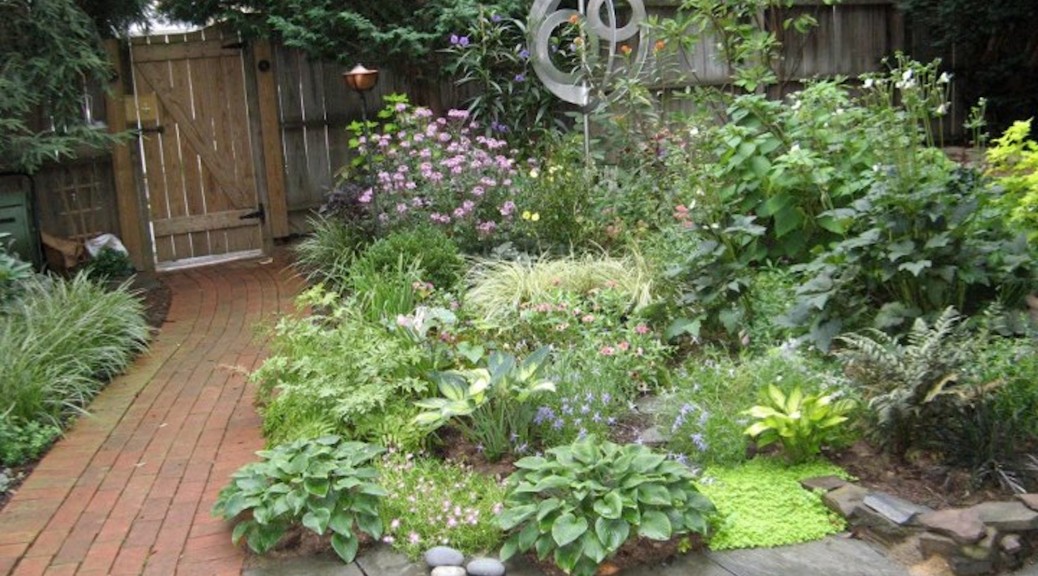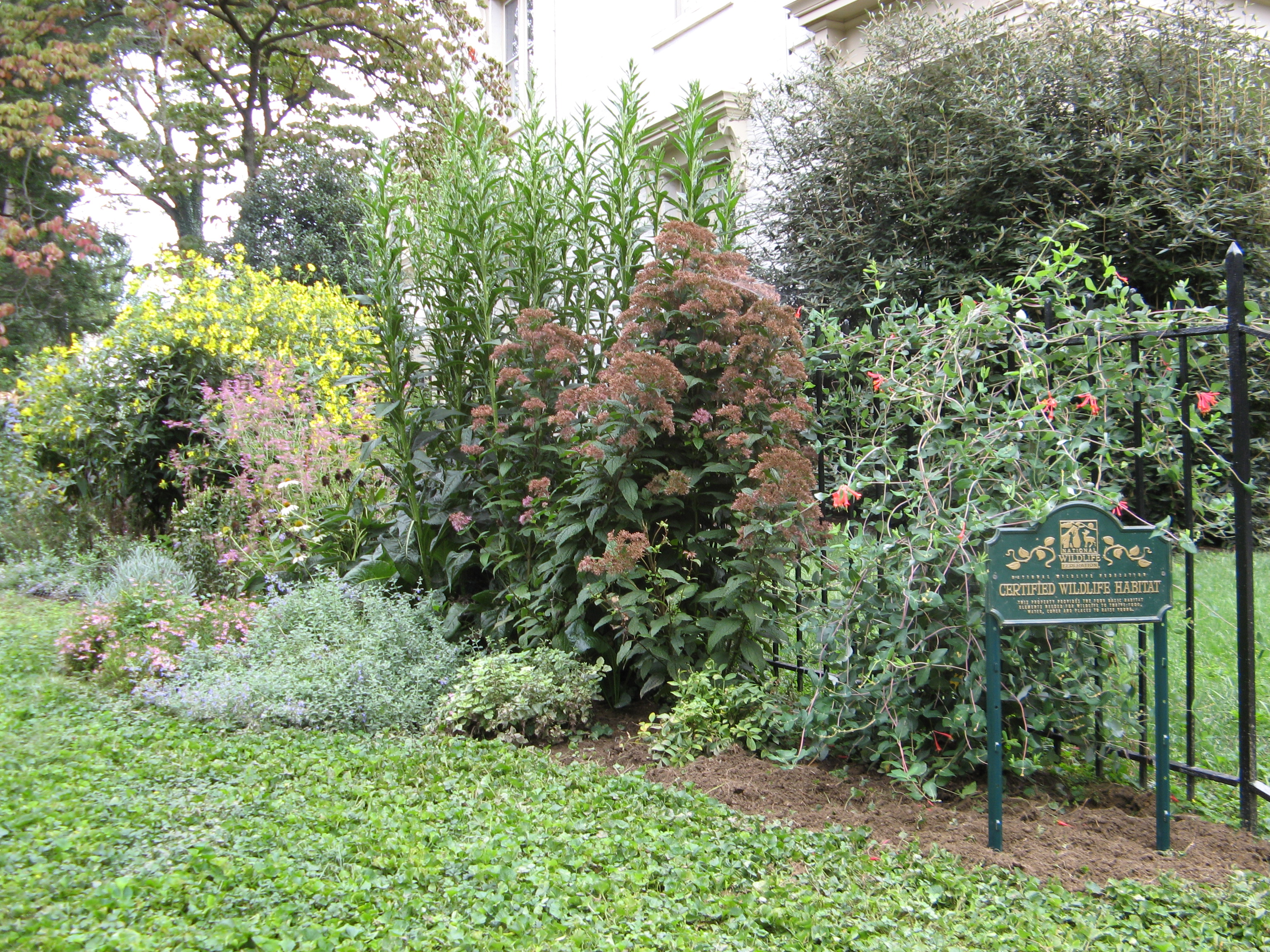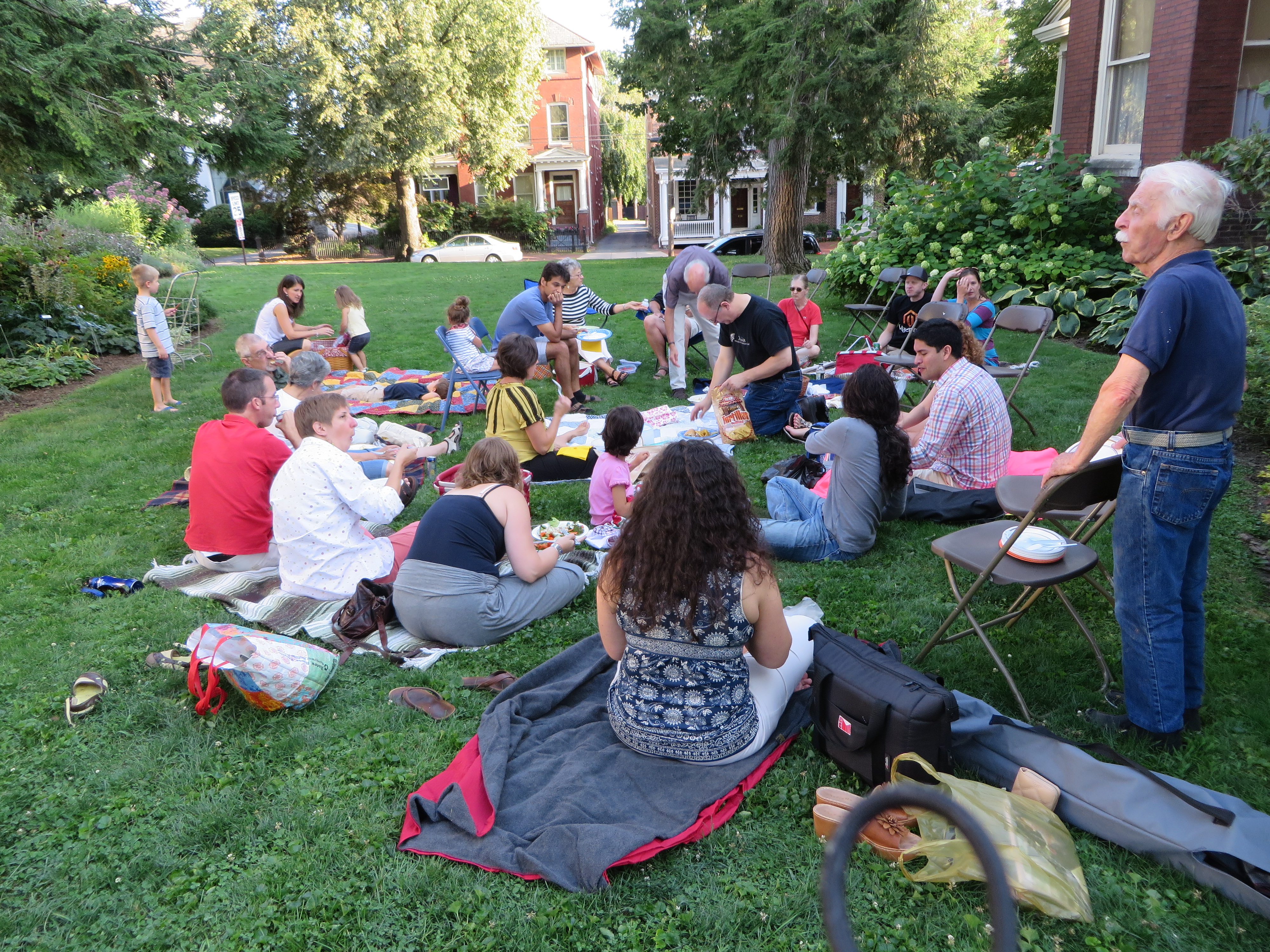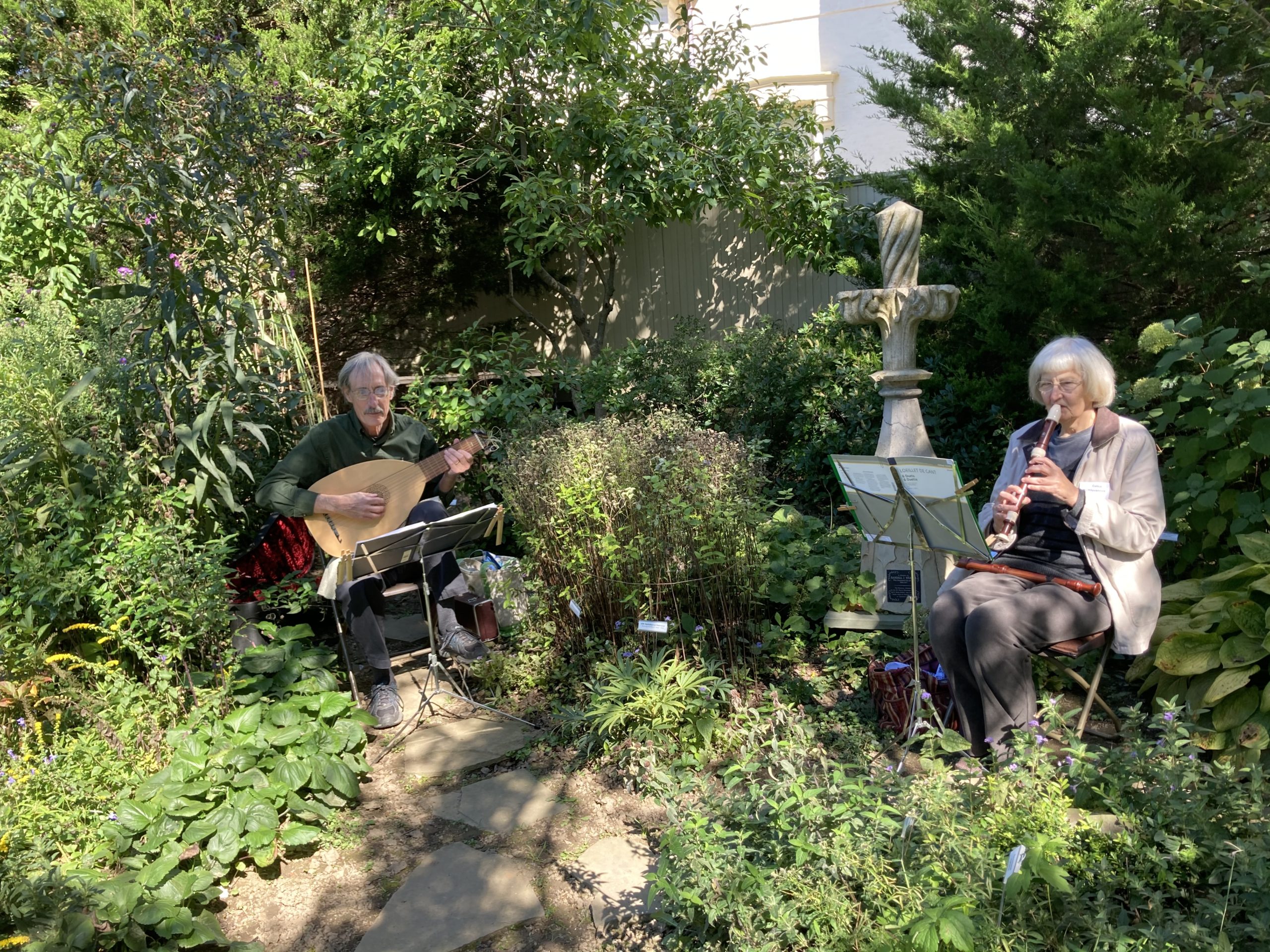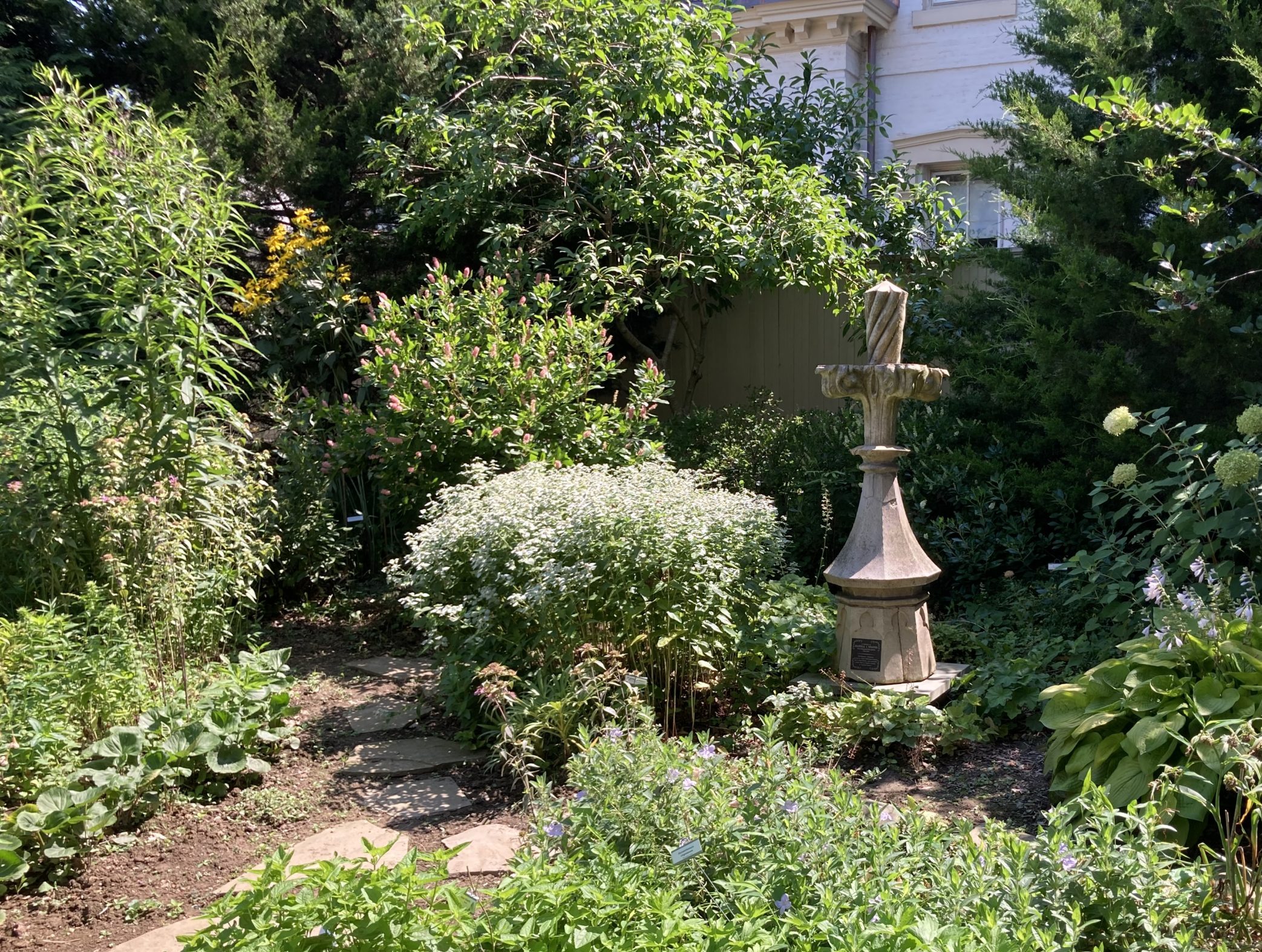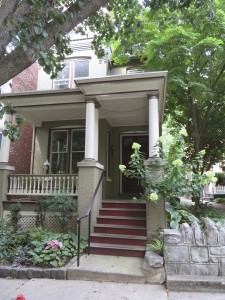
This is a story of a gardener and her conversion–from being a “Better Homes and Gardens” decorative landscaper to one who is passionate about undoing the harm we have caused to Pennsylvania’s natural bio-diversity.
She is learning, along with others, on two garden plots–one in her backyard at 232 and the other in the native plant garden she helped establish at the Wolf Museum of Music and Art around the corner on W. Chestnut Street.
This demonstration museum garden not only enhances the urban native pollinator garden movement, but it also educates the public about the beauty and necessity of providing host plants for native wildlife.
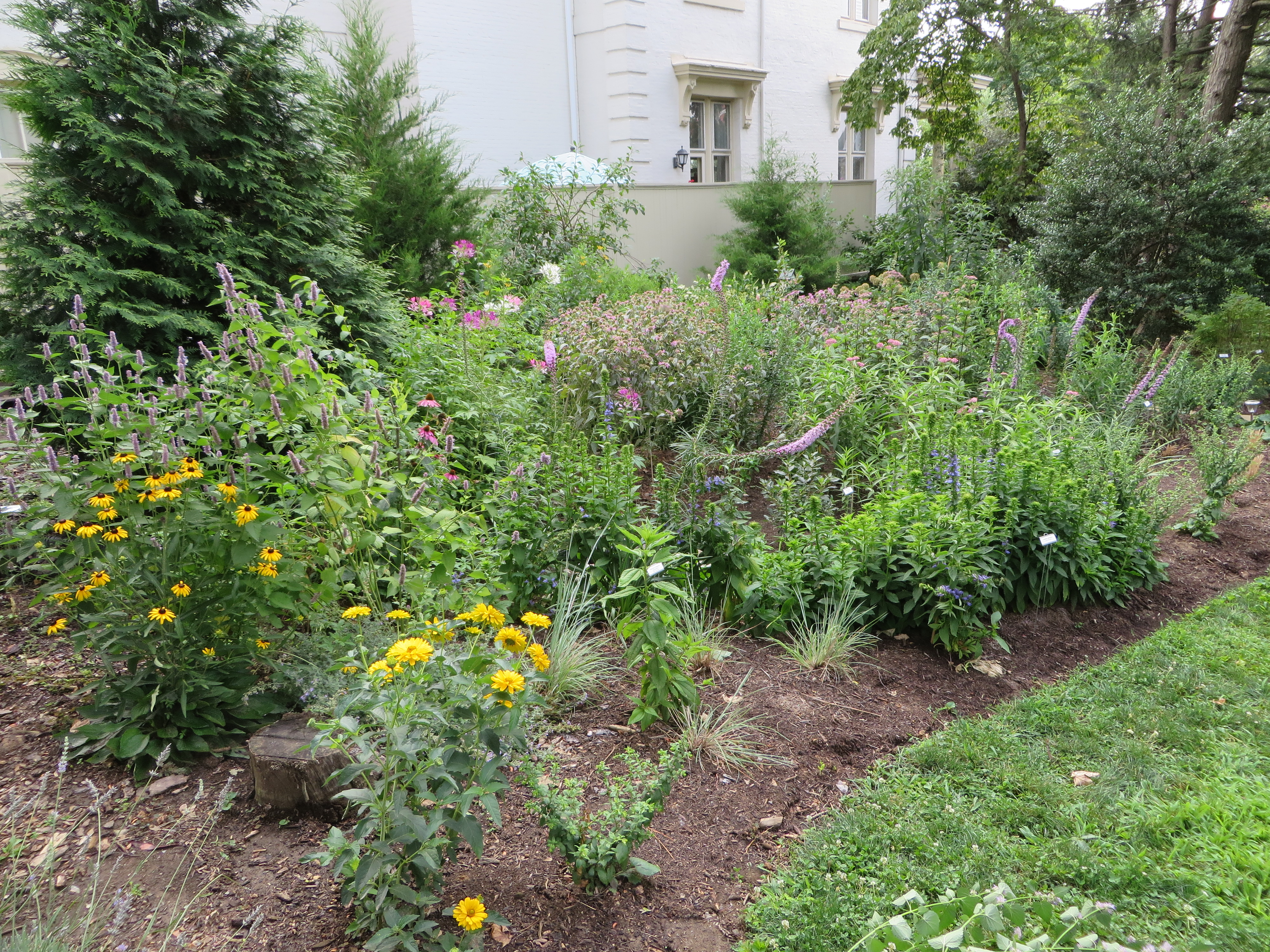 The new rain garden at the museum is one of many sites on the city’s Green Infrastructure Tour which highlights storm water management.
The new rain garden at the museum is one of many sites on the city’s Green Infrastructure Tour which highlights storm water management.

The rear garden at 232—with its brick sidewalk, hemlock, rhododendron, and large kousa dogwood, and parking area–was originally designed by Scott Weaver of Four Seasons for the previous owners in 1988. The patio was added in 1996 by Scott Weaver and later plantings by John Hershey.
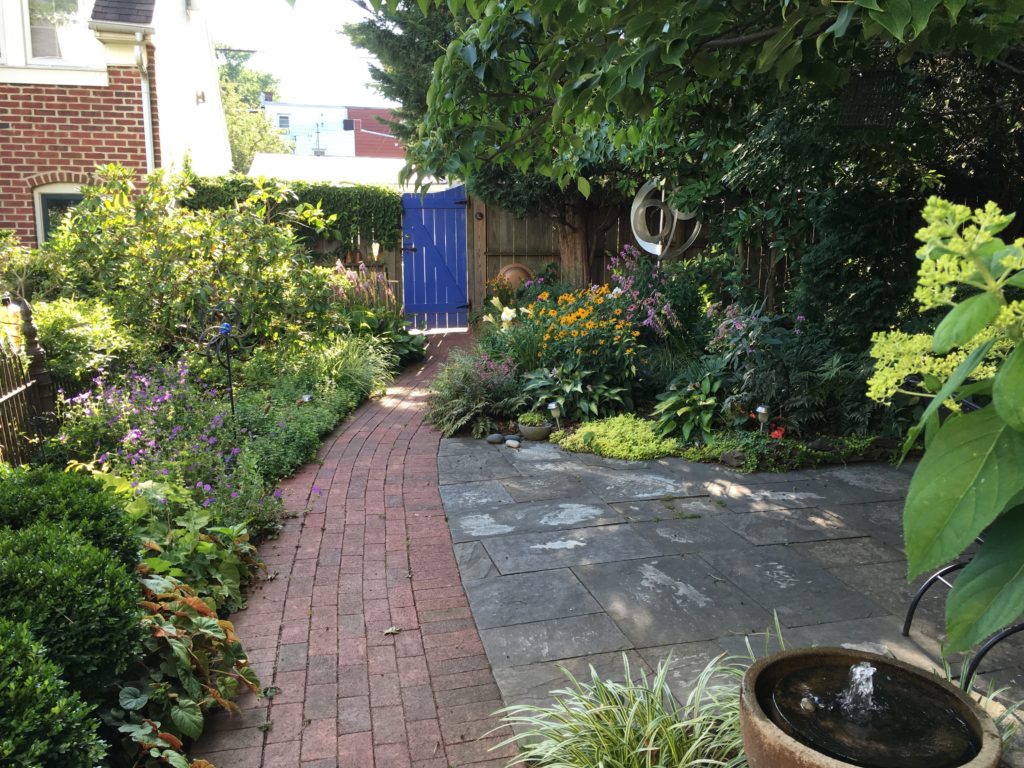
In this city oasis, Rod and Mary Lou are enjoying the secluded, familiar beauty of established trees, oakleaf hydrangeas, false Solomon seal, trumpet honeysuckle vines and boxwoods, hellebores, epimedium, and their farm’s trademark hardy begonias—which were already all here to welcome them!

Presently Mary Lou is transitioning the design at 232 to include more native plants to support bio-diversity–hydrangea arborescens, a sweet bay magnolia tree, autumn and royal ferns, carex sedges, and pollinator perennials. Plans include adding rain barrels for garden irrigation as they expand their native collection. It is her dream to promote more “native corridors” thru backyards for migrating species.

The bamboo garden panels were created by Mary Lou, who specializes in bamboo artpieces. A friend, Katie Friedler, designed the large stainless steel sculpture for Katie’s PCAD senior exhibit in the early 90’s.
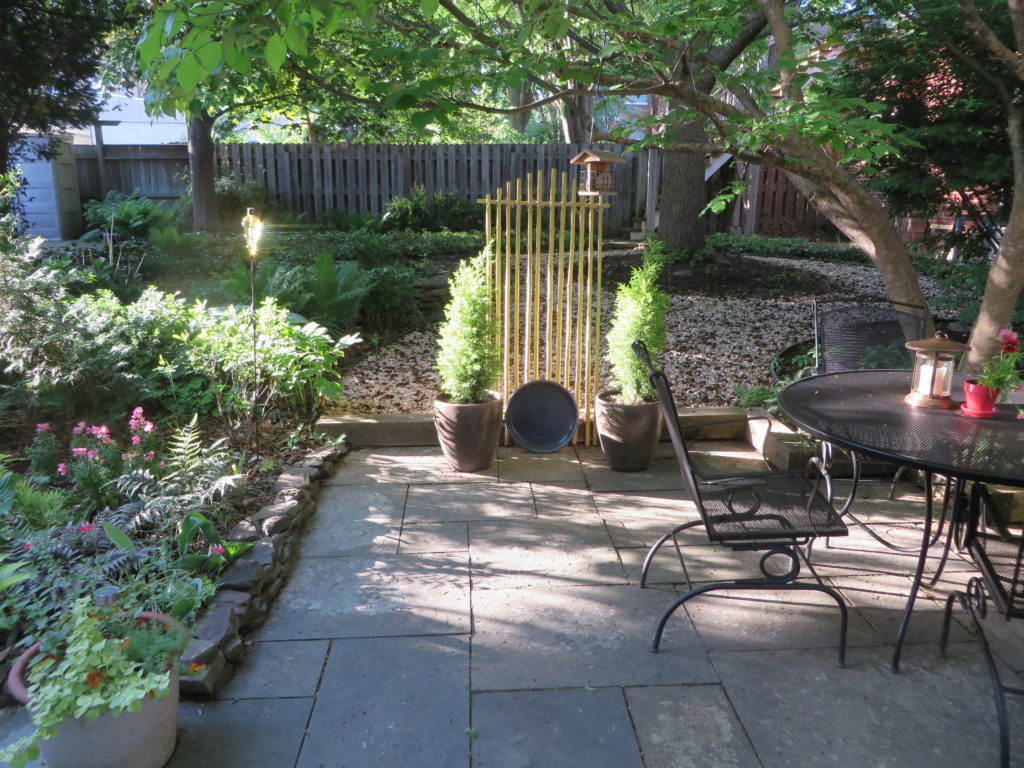
Rod is discovering, in addition to a great neighborhood, the joy of 15-minute backyard maintenance. Through the rear gate, the next-door neighbor and Rod share a raised-bed herb garden.
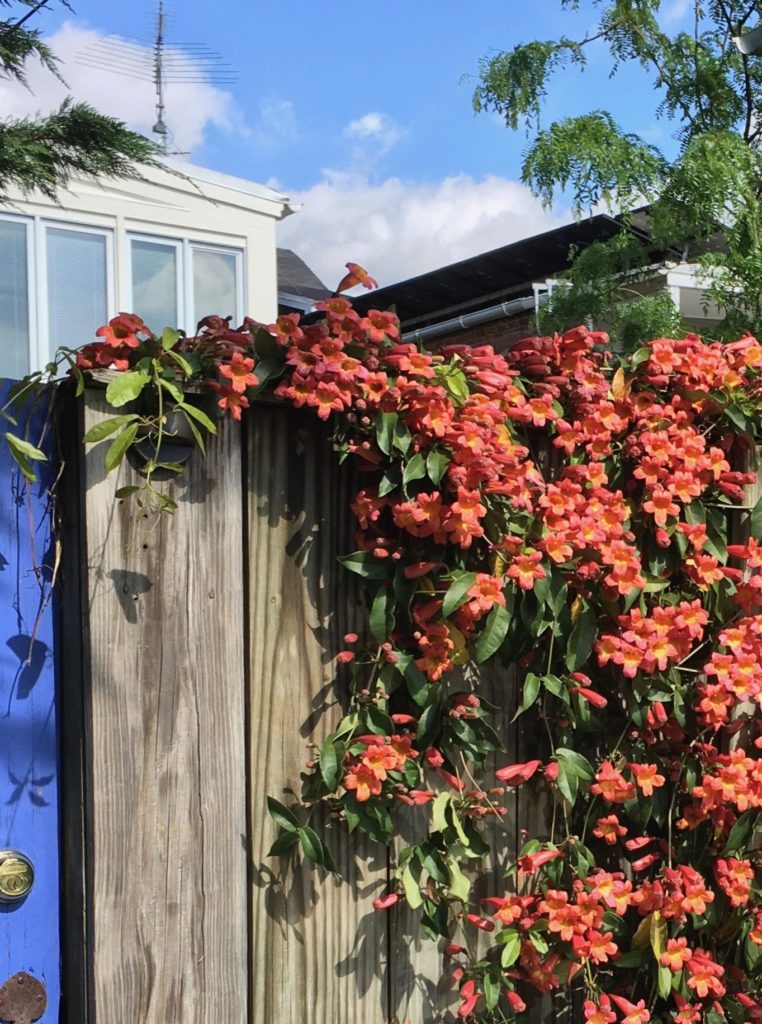
The Wolf Museum Native Plant Garden
See Lancaster Online articles and video
In Lancaster city, garden, and sense of community, grow
Rain check: Thriving city garden demonstrates ways to keep storm water out of the sewers
Mary Lou, who thrives on “blumenlust” garden therapy, is privileged to oversee the Wolf Museum Native Plant Garden at 423 W. Chestnut Street. Three generations of neighbors ripped out a huge bed of invasive English ivy bordering the two properties of the Wolf Museum of Music and Art and the Westlawn Mansion under her inspiration. The Phase One sunny location planted by volunteers in 2012 is ideal for the over 100 native species of perennials, shrubs, and trees which numerous butterflies, moths, insects and birds depend on for their survival.
The Wolf Museum board gave unanimous approval of the March 2012 design goals—to initiate a collaborative, certified public garden that would bring visibility to a unique city resource and enhance the urban native pollinator garden movement. Within weeks, Westlawn property owner, Guy Martin, and his landscaper, Donovan Lefever of Cobblestone Landscape, had joined the enthusiastic volunteers and board members to complete the project.
Volunteers included 83-year-old board member/docent for the museum, Frank Weatherly, who not only served as a former president of the Lancaster Men’s Garden Club, but is still quite capable with spade, trowel or rake. Neighbor Mary Friesen Seitz, who ripped out ivy for hours, later rallied support for an herb bed “for the locals” on the Wolf premises.
About 1/3 of the perennial collection comes from the 46-year-old gardens Mary Lou left behind on their ancestral farm in 2011. As word spread, many other community gardeners showed up with donations from their own backyards.
The garden continues to generate community on many levels and exceeds anything imagined. The board wants this acreage to be enjoyed, and the vision—be it pop-up picnics, lawn concerts, outdoor theater, or simply a contemplative urban oasis—keeps growing.
Neighbors contribute ideas, regular maintenance of the gardens, and occasional marathon workdays.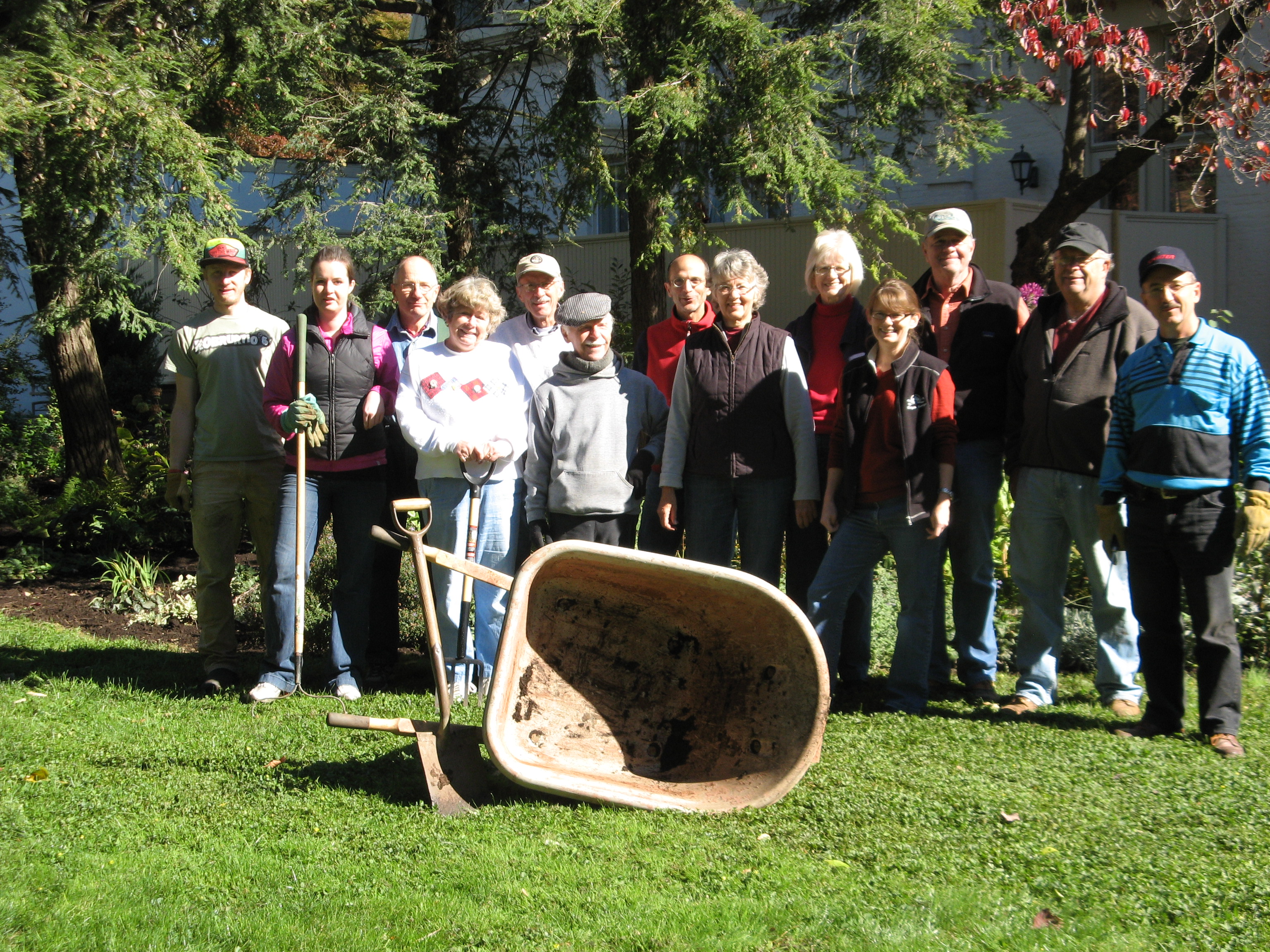
Phase Two in 2013 includes:
1. The new rear-boundary garden features two collections—native hydrangeas and viburnums,–installed that spring in collaboration with the north, Lancaster Avenue property owners and their landscaper, Howard Kauffman of Advanced Landscapes, LLC.
2. The recently-installed foundational plantings around the former home of musical visionary Dr. William A. Wolf and his wife, Francis Fairlamb Harkness, replace many Japanese barberry bushes and other non-natives. The house preserves the history of the Wolf Institute of Music which offered piano instruction to hundreds of Lancaster County students from 1913-1964. It also features an extraordinary twentieth–century collection of art by women artists known as the Philadelphia Ten.
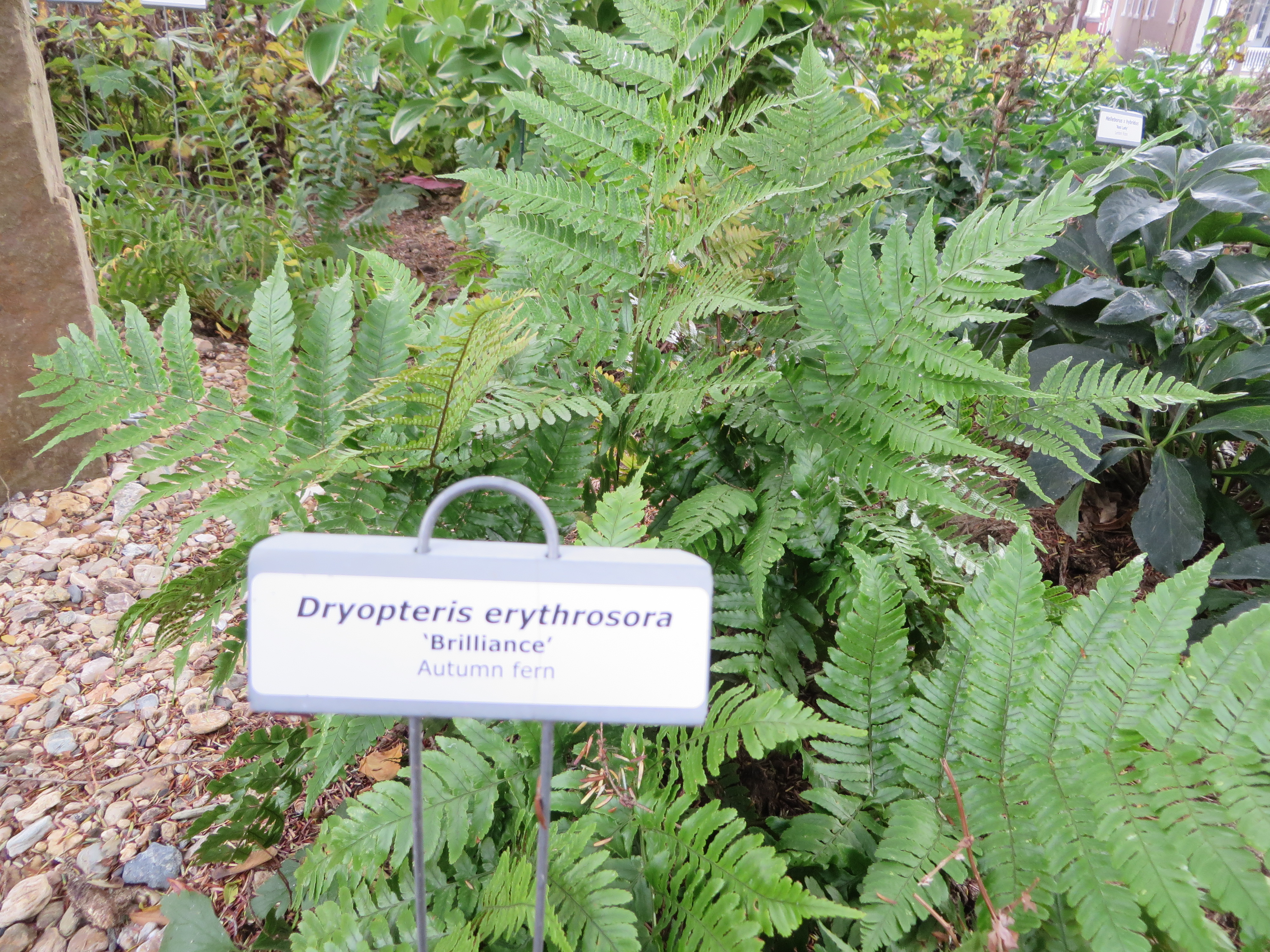 3. Botanical markers provide both the Latin and common names for the growing collection of native species.
3. Botanical markers provide both the Latin and common names for the growing collection of native species.
Phase Three features:
1. The Wolf/Westlawn installation of two 55-gallon rainbarrels and a large rain garden which handle stormwater run-off from Westlawn, under the design direction of Fritz Schroeder, LIVE GREEN, and Lydia Martin, both on staff at the Lancaster County Conservancy. The city and conservancy use this installation as a teaching site.
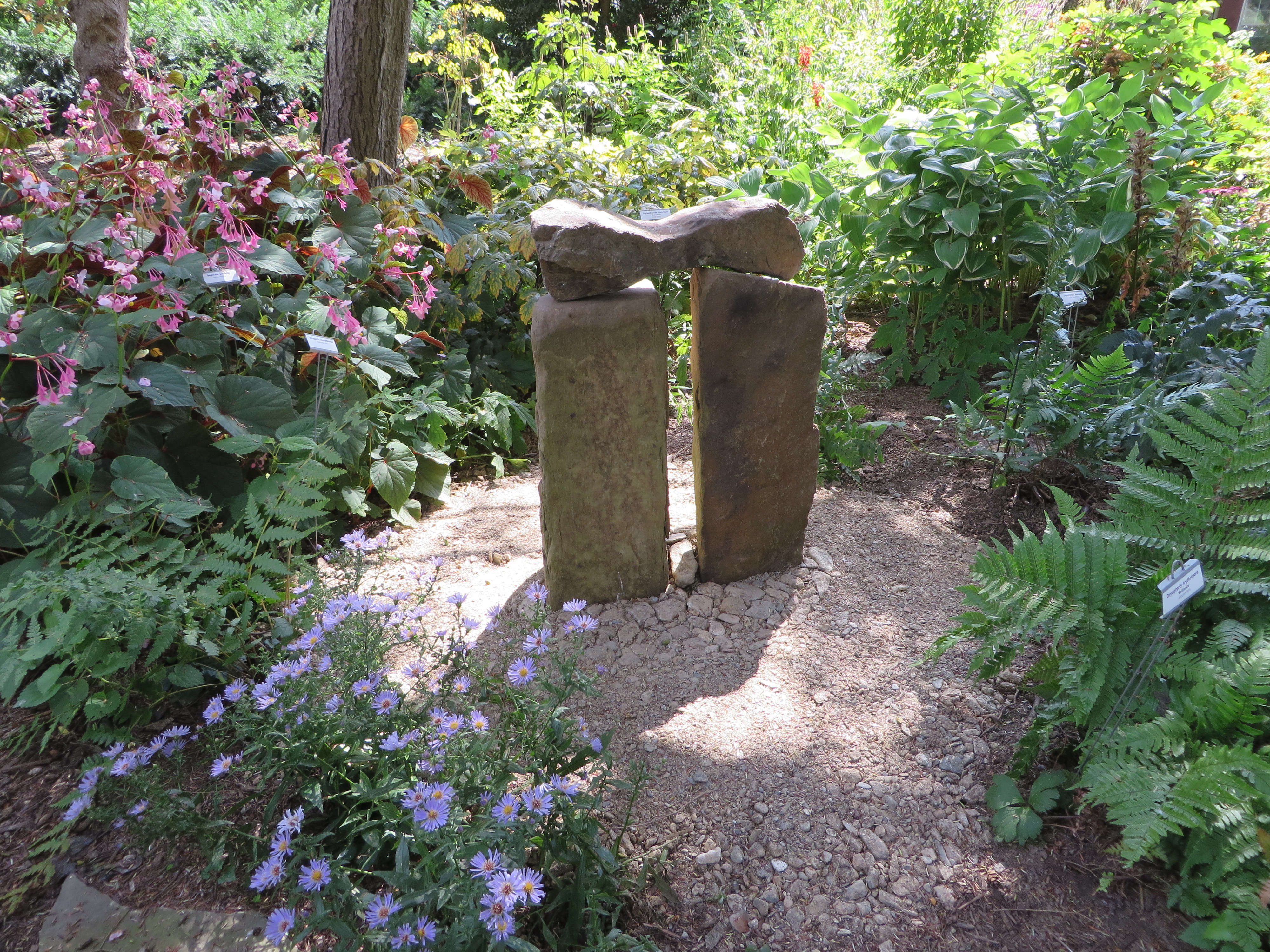 2. The gift installation of a stone sculpture by artist Russ Strunk.
2. The gift installation of a stone sculpture by artist Russ Strunk.
3. Memorial Pinnacle from the razed St. Paul’s Reformed Church, donated by family, to honor gardening neighbor, Randy Weaver.
Phase Four
The restoration of the low retaining wall and sidewalk along Lancaster Avenue in 2019 necessitated the removal of the remaining English ivy, overgrown shrubbery and poison ivy covering the “west bank.” An exciting design opportunity for more native plants was implemented the spring of 2020.
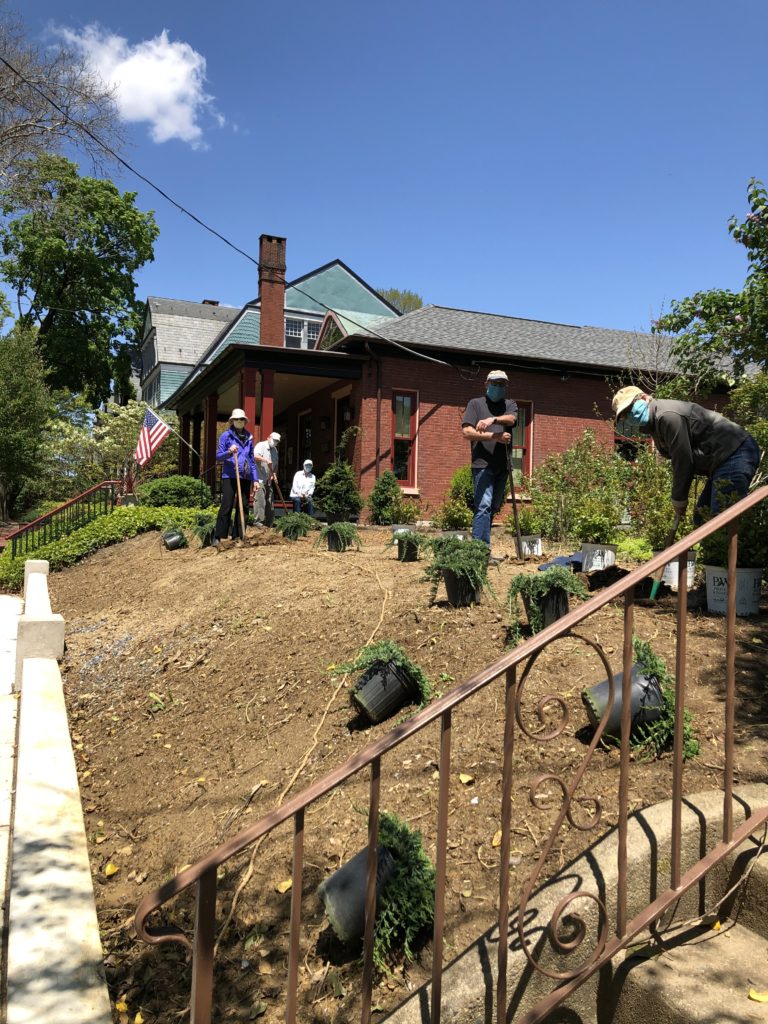
Neighbors helped as thirty-eight new shrubs and other perennials were installed and mulched with a thick layer of pine straw.
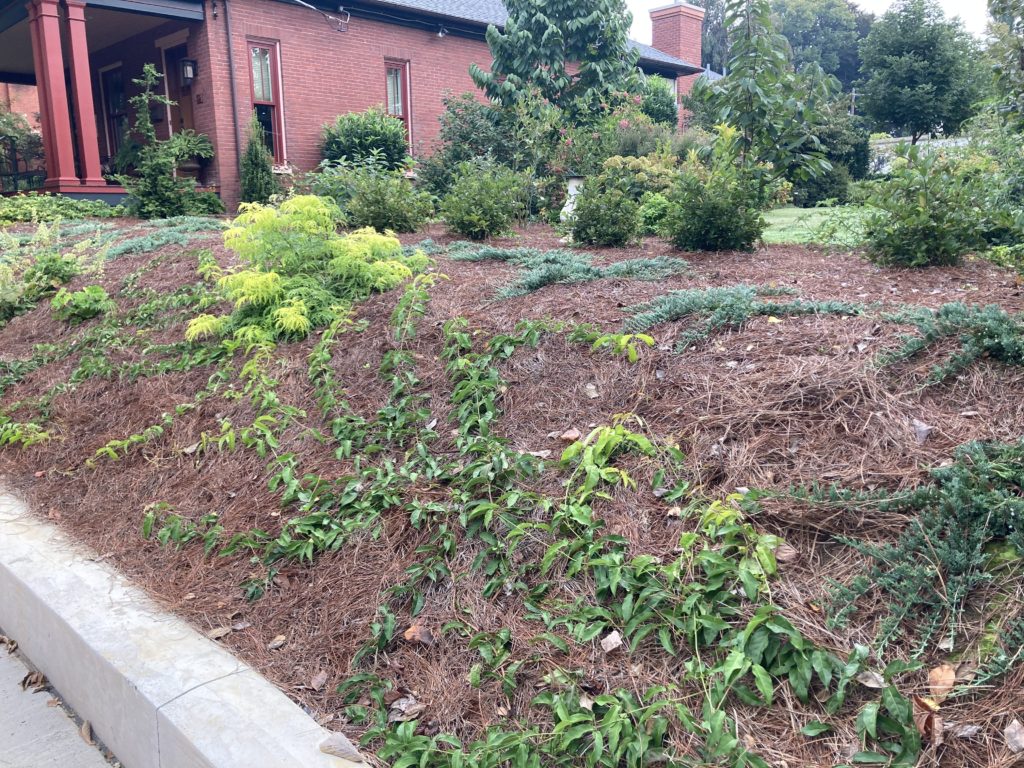
Another section by the west side entrance was reseeded in lawn and other old non-native shrubs along the side of the museum were removed to be replaced by button bush, hydrangea arborescent, and nine bark.
Three new street trees are being installed along Lancaster Avenue to complement the new sidewalk.
